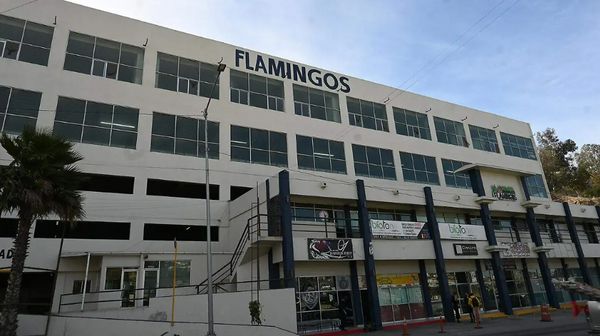
Northern Italy has been hit by a series of devastating floods in recent years. In March 2025 and the previous autumn, heavy rainfall hammered the region, swamping fields, farms and towns. More than 3,000 had to leave their homes in Emilia-Romagna, between Bologna and Ravenna.
The downpours caused widespread floods, landslides, and infrastructure damage. This has been a repeated event since 2023 when the area saw what has been called the worst flood in a century.
While climate change is a major factor behind the likelihood of these disasters, human neglect has worsened the risk. Decades of poor maintenance of drainage canals and ageing riverbanks – some of which are medieval, like those in Bologna – have made the Po valley particularly vulnerable.
As the meteorologist James Parrish has explained, when dried-out soil suddenly receives half a year’s rainfall in two days, even modern flood defences cannot cope, especially in a landscape prone to waterlogging.
According to the Italian Institute for Environmental Protection and Research and the data collected in 2021 by the National Institute of Statistics, in Emilia-Romagna alone, over 2.5 million live in areas of high or medium flood-risk.
Yet if today’s floods feel apocalyptic, history tells us that living with floods is nothing new in these territories. Medieval communities faced similar challenges and how they lived with water may offer lessons for today.
Get your news from actual experts, straight to your inbox. Sign up to our daily newsletter to receive all The Conversation UK’s latest coverage of news and research, from politics and business to the arts and sciences.
Since the earliest times, people in the Po valley developed what the historian Petra van Dam calls an amphibious culture: a way of life that continuously adjusted to the threats and benefits posed by rivers. From the Terramare and Etruscan cultures in the second and first millennium BC (but even earlier) to the middle ages and in some cases even now, communities did not just fight floods; they integrated them into their daily lives and economies.
After the fall of the Roman state, Italy entered a period of intense political, socio-economic, climatic and environmental change. As archaeological and historical research shows, settlements from this period often clustered near waterways despite their risks.
Every year, rivers overflowed destroying crops or buildings. Evidence of these events comes from contemporary narratives, such as the life of Saint Fredianus, and in the flood layers buried in the soil. Traces are even found in cave minerals in the Apuan Alps.
Why live so close to something so destructive? Because rivers also brought huge benefits like fertile land, irrigation, mills, fish, woodlands and trade.
Communities adapted in practical ways. They grew crops suited to wet soils, grazed animals in seasonal marshes, and even breached riverbanks on purpose to let in muddy water that deposited rich sediment for farming. To stay dry, they also built houses on natural or artificial high grounds above floodwaters.
These strategies show a deep resilience in medieval societies, something to keep in mind also in the current situation.
A shared responsibility
In early medieval Italy, people dug canals and drained wetlands not just to farm new land, but also to manage flooding and redirect rivers. These projects were often led by monasteries, landowners, and farmers, who worked together out of necessity.
Research research from the Maremma wetlands in Tuscany shows how communities and rulers cooperated to maintain dikes, drainage channels, and salt pans (where seawater was left to dry and leave behind salt). Local know-how and labour mattered as much as political coordination and investment.
Today, people often expect the state to manage floods. But public response is not always quick or fair. For instance, in Traversara, a village severely hit by floods, locals were furious towards proposed mandatory insurance policies, feeling abandoned by authorities.
Modern flood defence relies heavily on centralised systems, satellite monitoring and major infrastructure projects. These tools are crucial, but not enough.
Historical lessons suggest that effective flood resilience must also incorporate local (historical) knowledge and community participation. Some solutions include restoring spaces for rivers to overflow safely and continuous targeted maintenance of canals and levees.
Strengthening and adapting Italy’s consorzi di donifica – local organisations responsible for drainage and water management – could revive a model of shared governance that proved successful for centuries.
As recently suggested in the response strategies to the 2023 floods, responsive resilience takes teamwork. National, regional, and local actors must coordinate. In this case, adopting an “amphibious” mentality – one that views rivers not just as threats but as central, living elements of the landscape – could help reshape flood policy.
Combining historical understanding with modern science and community empowerment can guide better ways to live with water. Medieval societies, through trial and adaptation, managed to coexist with their rivers. Relearning from them today could help build more sustainable futures in flood-prone regions – not only in Italy, but across the globe.
Looking for something good? Cut through the noise with a carefully curated selection of the latest releases, live events and exhibitions, straight to your inbox every fortnight, on Fridays. Sign up here.
Marco Panato does not work for, consult, own shares in or receive funding from any company or organisation that would benefit from this article, and has disclosed no relevant affiliations beyond their academic appointment.
This article was originally published on The Conversation. Read the original article.







